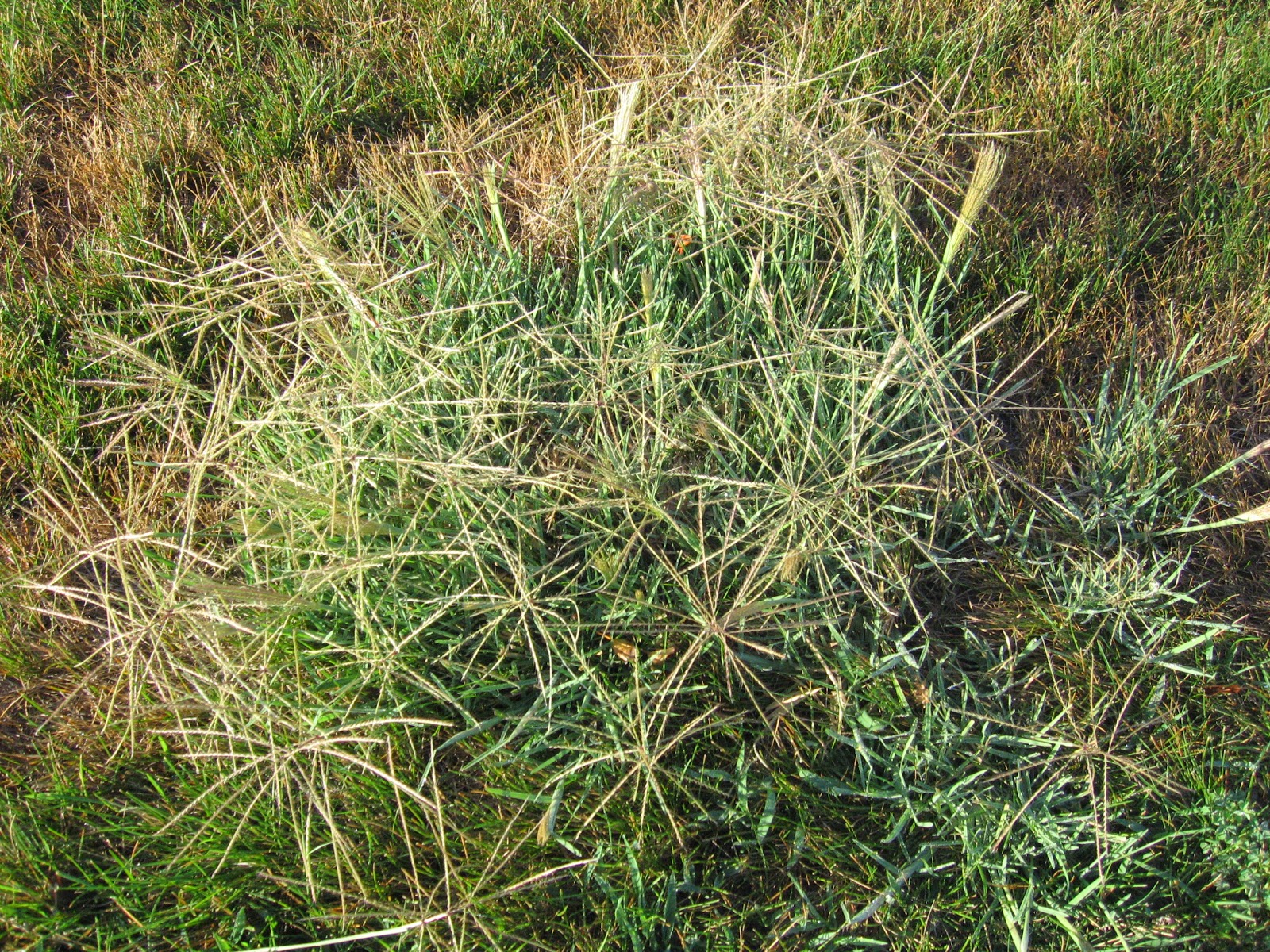by Brenda Larabee
Summertime Series: Post 1
Editor’s Note: As the season turns to fall and winter, the Nebraska Writing Project is sharing some summer stories to lend warmth as the days turn more dark than light. Please enjoy the first post in this installment, “Short Conversations” by NeWP Teacher Consultant Brenda Larabee.
“There’s some turkey grass coming up in your yard,” the neighbor to the south said about four or five years ago. “You’d better get rid of that.”
He seemed insistent, but not knowing why, I said I would and ended the conversation,
Those years have passed, and I’ve watched that “turkey grass” creep throughout my lawn. By asking several people, I’ve learned the actual name of the grass is windmill grass. I’ve also learned my method of scooping up the tumbleweed-looking seed sprouts and stuffing them into a garbage bag for removal is not an effective method.
Windmill grass, according to my research, is a perennial which is native to Nebraska, but in my yard, it’s INVASIVE, taking over at least one-third of my bluegrass lawn. Spreading by stolons or seed sprouts that – when mature – fan easily in the wind scattering new seeds, this is more difficult to contain than I had initially anticipated. When the seed sprout is almost remiss of seeds, a gust of wind can detach it from the plant, causing it to “tumble” across the yard, emptying the remainder of the seeds throughout the new terrain.
These seeds could be killed by a pre-emergent, I thought. The windmill grass must have been laughing at my naivete because this grass had plans to live, sending out roots in search of new soil.
A short conversation with the “weed guy” – not that kind – led me to purchase some surfactant and a chemical called Tenacity. His instructions: apply in the spring and again in the fall. In year one, I played a game of catch-up, chasing the old growth while dosing the new. I’m in the second year of the fight, and there are patches of dying grass proving the chemicals are working, and the annoying and invasive native windmill grass is being eradicated, but this is a marathon, and I know there is at least a year three in this battle.
It has been proven I should have acted more promptly on the advice of the neighbor to the south!
This summer, as I worked in the garden, the neighbor to the west made conversation inquiring about the garden and how it was doing.
“I was so excited to have a garden again, I may have overpopulated…”
He nods in agreement as he casually looks over my garden and says, “Better get rid of that bindweed you got creepin’ in.”



